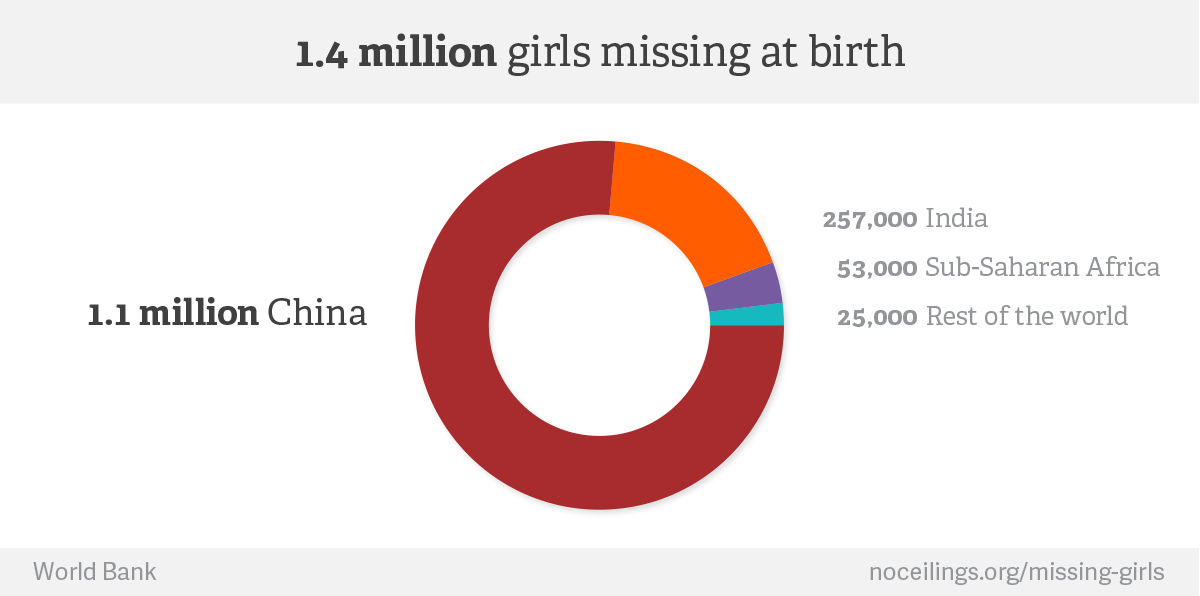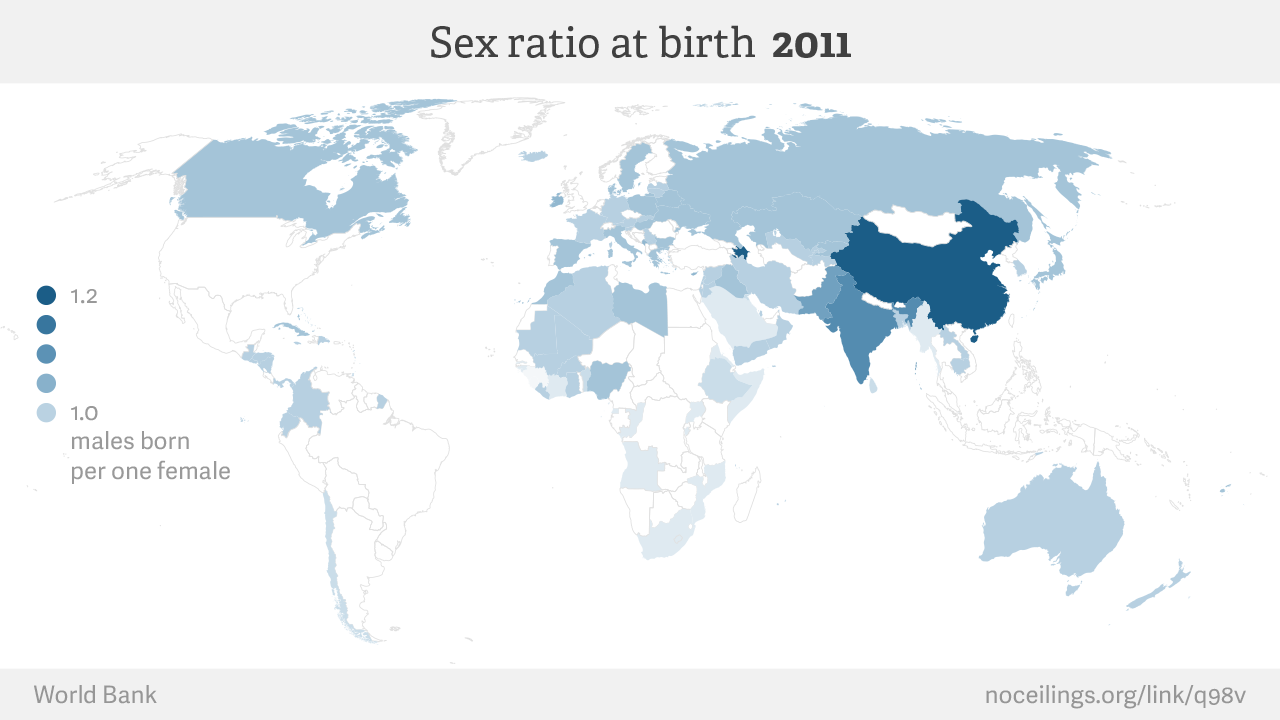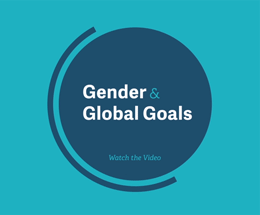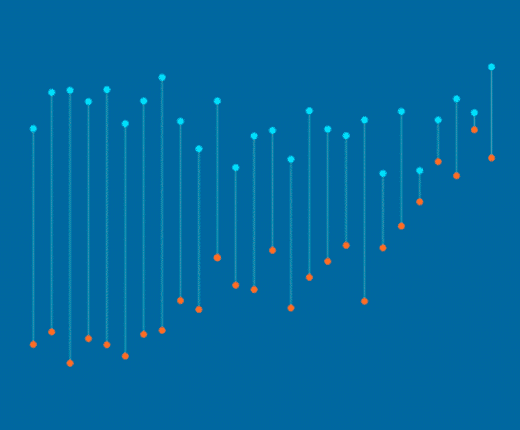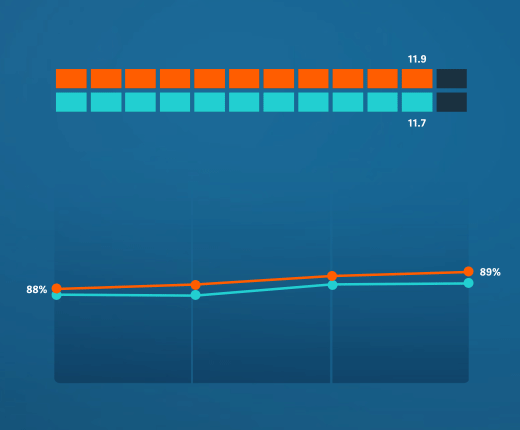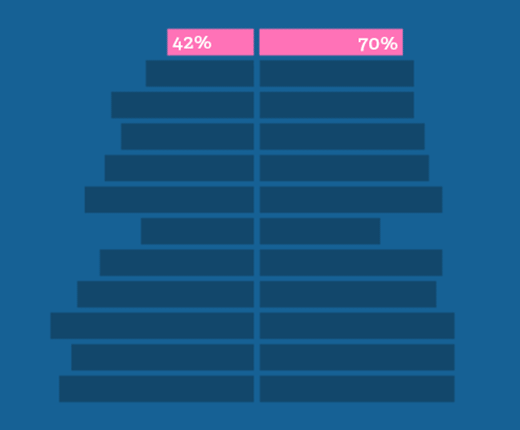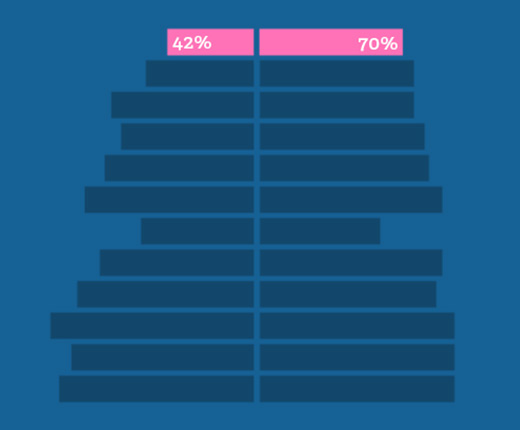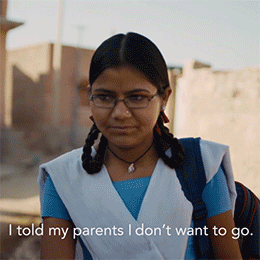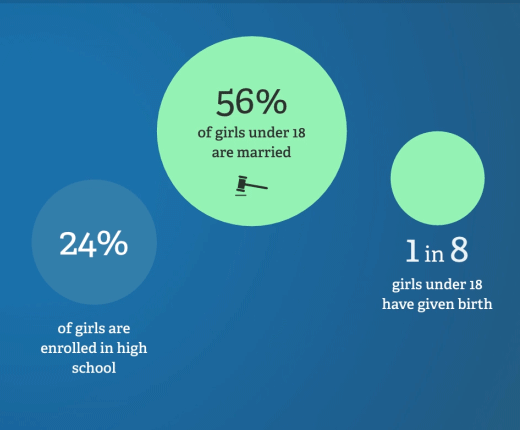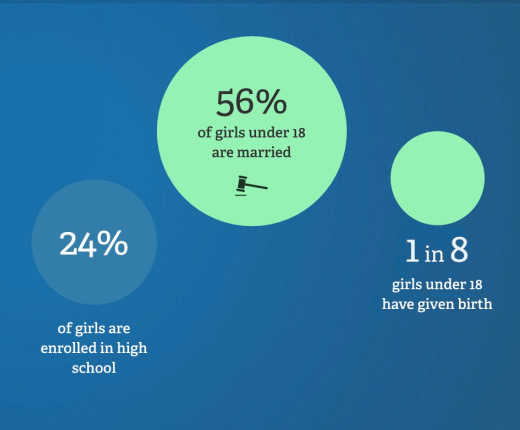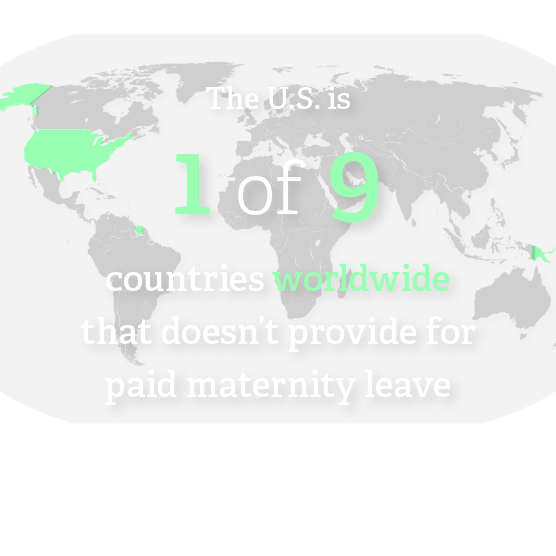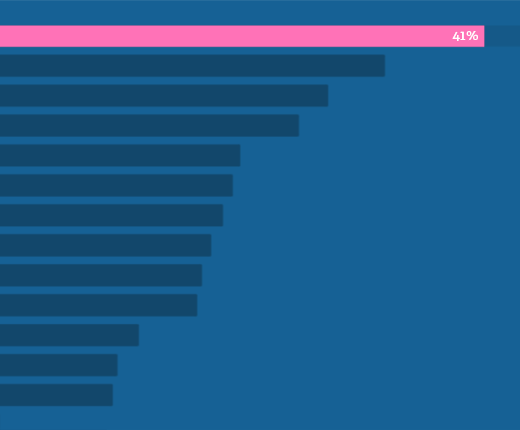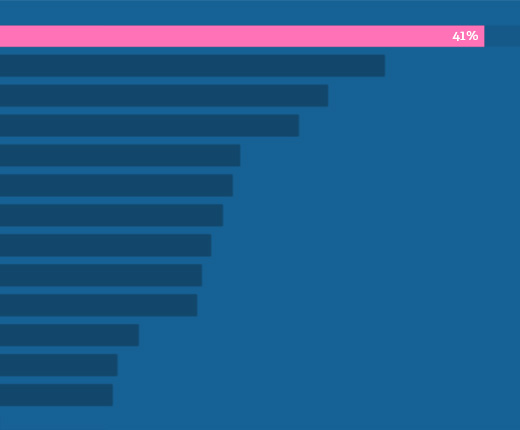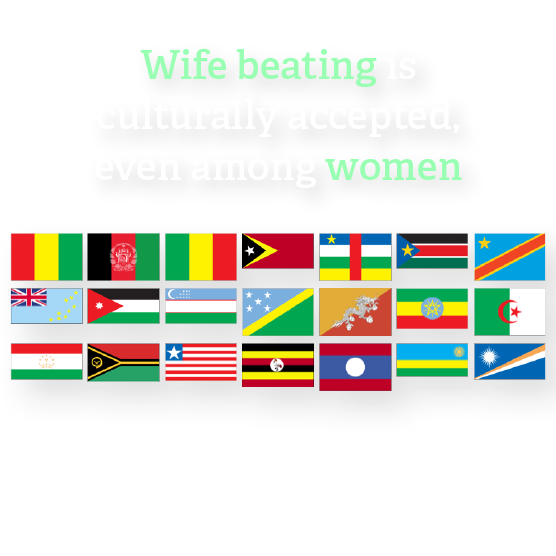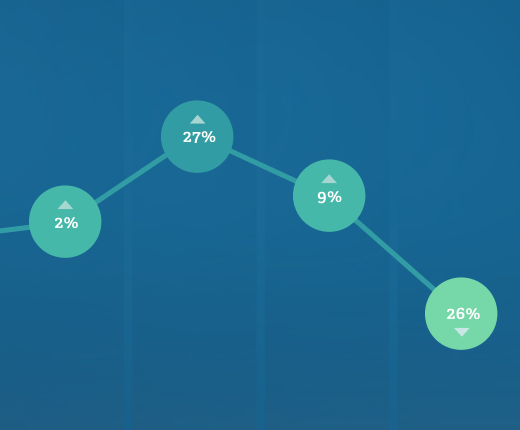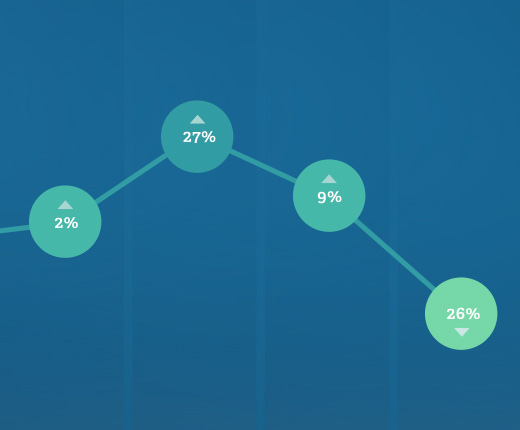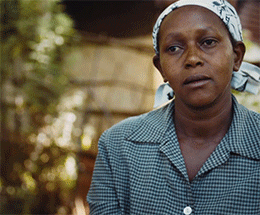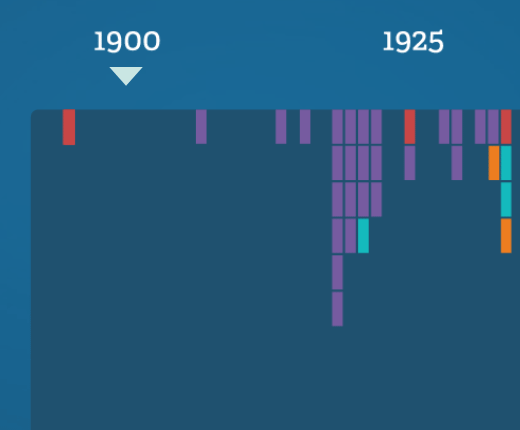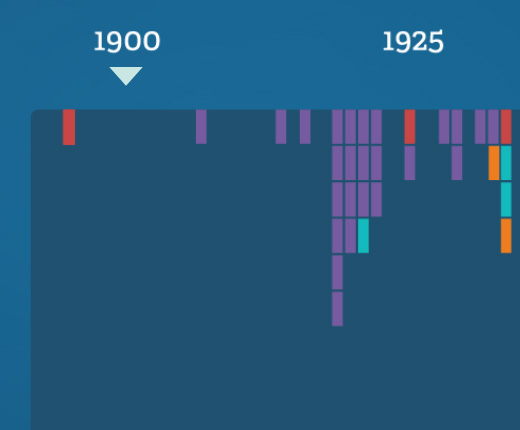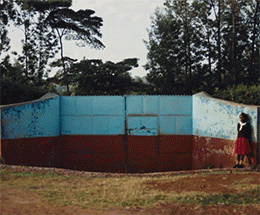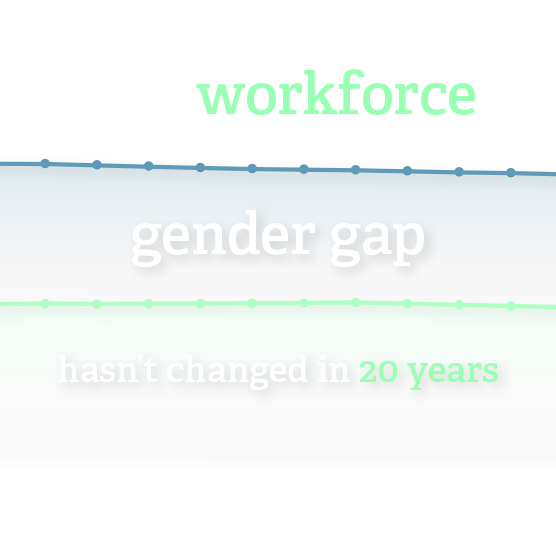Missing girls. The phrase may bring to mind abduction or human trafficking. For UNICEF, the World Health Organization, and other international organizations, however, the term refers to the 1.4 million girls who are “missing” at birth, in any given year, due to gender-biased sex selection.1 While these missing girls are never born, many others are victims of infanticide or neglect because they are not valued as much as boys. The result is a staggering number of baby girls who are robbed of the opportunity to thrive past childhood or are simply never born.
By the year 2020, China will have 30 to 40 million more males than females under age 20.
While natural populations have 102 to 106 boys per 100 girls, gender-biased sex selection has skewed population ratios in some South Asian, East Asian, and Central Asian regions as high as 130 boys per 100 girls.2 Together, China (77%) and India (18%) account for 95% of the world’s missing girls.3 By the year 2020, China will have 30 to 40 million more males than females under age 20.4
Discrimination, denigration, and violence
In countries where there are missing girls, there also tend to be persistent discrimination and deeply rooted social norms that devalue and denigrate female lives. These harmful social norms include traditions of father-to-son inheritance and a reliance on boys to provide economic support and security for parents in old age. They may also include traditions that keep women out of the workforce, laws or customs that prevent them from owning property, and dowry — the practice that requires a woman’s family to give property or money to the family of the man she is to marry.
Trends toward declining family size, policies restricting the number of children a family can have, and the increasing availability of technologies that can determine sex before birth also contribute to the increasing numbers of missing girls. Of course, societies with missing girls become societies with missing women, and shortages of women may lead to increases in trafficking, forced marriages, violence against women, and other human rights abuses within and across countries.
Ultimately, when women are missing, so are their contributions — to family, to community, and to the economy. Without women’s full participation, the prosperity of households and whole nations suffers.
Solutions are possible
Solutions to the problem of missing girls will have to be as multifaceted and pervasive as the causes. Only far-reaching measures that address social and gender norms can reverse societal discrimination and put an end to the problem of missing girls.
Successful solutions will require the concerted efforts of actors at all levels.
It can be done. Twenty-five years ago, the Republic of Korea had a sex ratio at birth that was nearly 86 girls per 100 boys (or 116 boys to 100 girls). Over the next two-and-a-half decades, the ratio narrowed to 93 girls per 100 boys (or 107 boys to 100 girls).5 Much of the positive change was driven by economic growth. However, government support and public education campaigns also helped generate change, as did new laws granting equal rights to women and a “Love Your Daughter” media campaign. A number of other countries have succeeded in using community-based programs to raise the status of girls within families and societies, and to celebrate the birth of a girl and her value.
To be able to propose solutions and ensure the full participation of women and girls, it is essential that we:
Promote human rights legislation and policy
Governments should establish laws and policies that promote broad-based gender equality and full participation. While discriminatory practices may live on after they are outlawed, equitable laws and policies are a necessary first step.
Undertake broad-based advocacy and awareness
Where discriminatory laws have been eliminated but the practice of discrimination lives on, advocacy and awareness can help. In China, for example, women are guaranteed land rights by law, but in practice their names are more often than not omitted from land ownership documents, so they are left with no claim to the property.6 Women need to know their rights and work with advocates to exercise them.
Engage communities to advance full participation
Communities play a powerful role in transforming the social and gender norms to promote the rights of girls and women and the opportunities offered to them. Community leaders, faith-based organizations, teachers, and many others are critical to ensure equitable services and opportunities for women and girls, and to promote transformative gender norms.
Improve data collection and analysis
We need more and better data so that we can fully understand the problem’s magnitude and its social and security consequences. Complete and accurate data will also allow us to measure the effectiveness of interventions and invest resources and efforts efficiently.
As demonstrated in the example of Korea, the problem of missing girls is not insurmountable. Successful solutions will require the concerted efforts of actors at all levels — governments, communities, religious and faith-based organizations, and civic organizations — but beneficial results will be just as pervasive. By restoring the presence and potential of missing girls, we can advance social progress and economic prosperity across nations and around the world.
1 The World Bank, World Development Report 2012: Gender Equality and Development (Washington, DC: The World Bank, 2012), 77.
2 World Health Organization, Preventing Gender-biased Sex Selection: An Interagency Statement (Geneva: WHO Press, 2011), 1.
3 The World Bank, World Development Report 2012, 15.
4 The Economist, The Worldwide War on Baby Girls (London: The Economist Group, 2010).
5 World Health Organization, Preventing Gender-Biased Sex Selection, 8.
6 Landesa Rural Development Institute, Summary of 2011 17-Province Survey’s Findings (Seattle: Landesa Rural Development Institute, 2012), 1.
